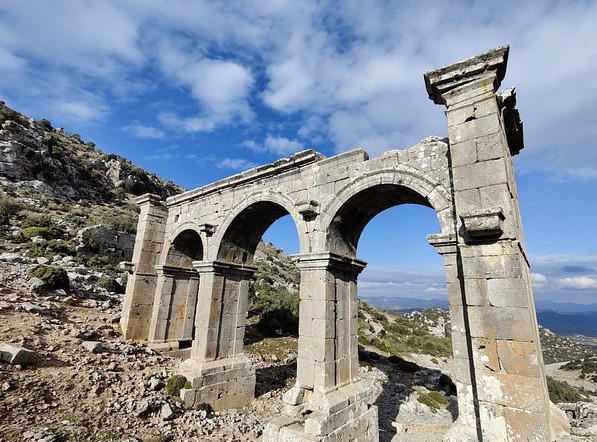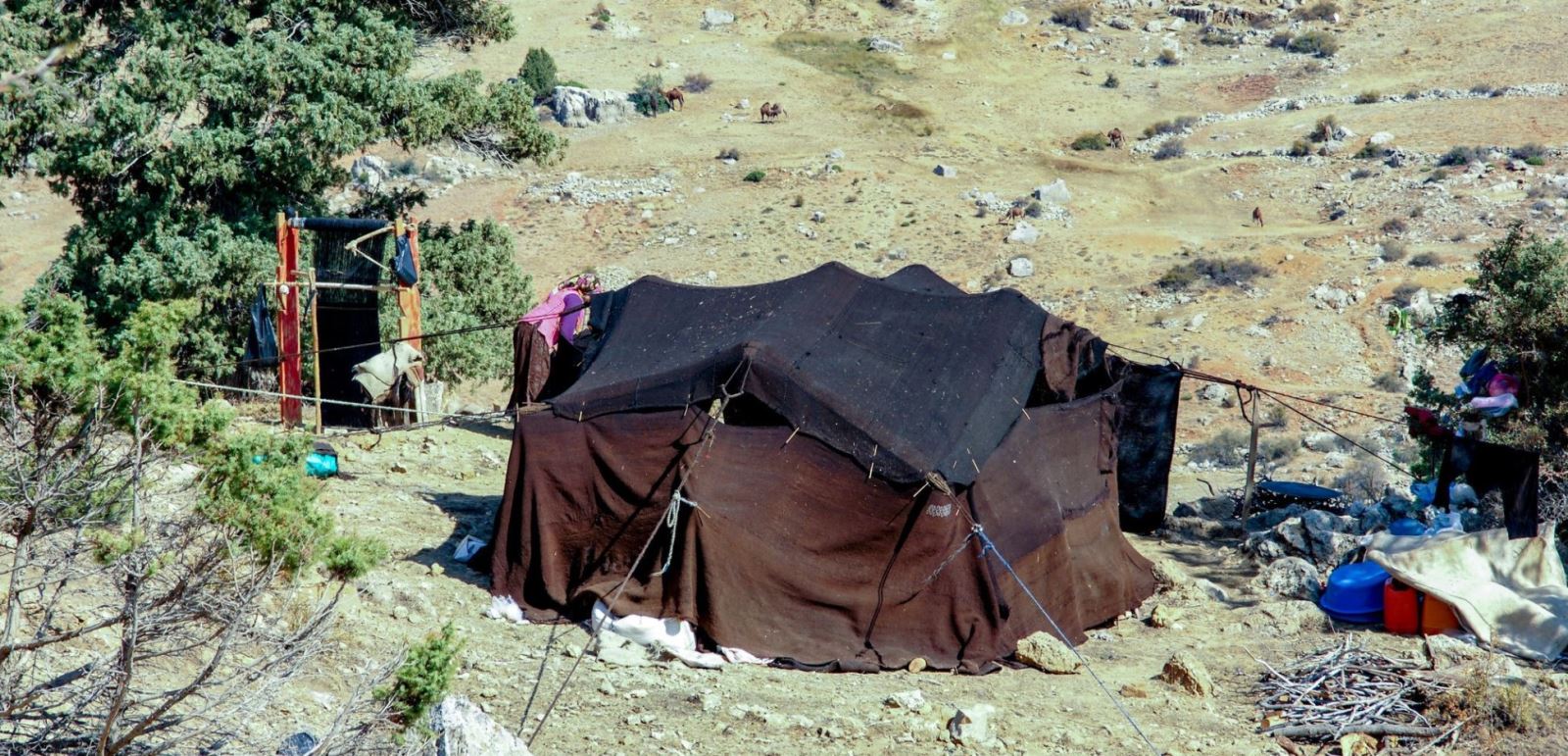
Antalya, city and Mediterranean Sea port, southwestern Turkey. It is situated on the Gulf of Antalya.
Attalia was founded as a seaport in the 2nd century bce by Attalus II Philadelphus, a king of Pergamum. It was bequeathed to the Romans by his successor, Attalus III Philometor Euergetes. St. Paul the Apostle and St. Barnabas embarked from the seaport on their evangelical mission to Antioch. The “Hadrian Gate,” a marble portal of three identical arches, was built to commemorate a visit by the emperor Hadrian in 130 ce.
During the Middle Ages the city was a Byzantine stronghold and an important embarkation point for troops going to Palestine during the Crusades. It was captured by the Turkish Seljuq ruler Kay-Khusraw in 1207 and soon became the most important town and port of the region. Although it was first occupied by the Ottoman sultan Bayezid I in 1391, its incorporation into the Ottoman Empire was delayed until the late 15th century because of the disruption caused by the invasion of Timur (Tamerlane). In the tripartite agreement of 1917 for the postwar division of the Ottoman Empire among Italy, France, and the United Kingdom, Italy claimed Antalya and its hinterland. Italian troops occupied the district in 1919 but were driven out in July 1921 by Turkish nationalist forces.
With a subtropical warm climate and an abundance of ancient sites nearby, Antalya is the chief tourist resort on the Turkish Riviera. The old town, surrounded by fortified walls restored during Roman, Byzantine, and Seljuq periods, occupies the summit of a low cliff overlooking the harbor. Notable monuments in the town include an ancient tower, probably once used as a lighthouse, and a Seljuq religious college and mosque dating from 1250. Yivli Minare, a former Byzantine church converted into a Seljuq mosque, now houses the local archaeological museum.

Old Antalya Houses: In Antalya, where summers are very hot and winters are mild, the construction of old houses focused more on blocking the sun and providing coolness than on keeping out the cold. Shady stone paths and courtyards are features that facilitate air circulation. The houses are built on three floors with an entrance that serves as a storage area and hall.
Fluted Minaret: This is the first Turkish structure in Antalya. It is located near the harbor in the center of the city. According to the inscription on it, it was built during the reign of the Anatolian Seljuk Sultan Alaeddin Keykubat (1219-1236). Its body, made of brick, consists of eight half-cylinders. Although there used to be a mosque next to this minaret, it must have been destroyed, as the mosque next to the minaret dates from a later period, specifically 1372. It was constructed by an architect named Tavaşi Balaban during the time of the Hamidoğulları, a Turkish principality.

Great Mosque: It is also known as Kesik Minaret. It was originally built as a basilica in the V. century. Very few parts of the first work survived, and it underwent changes during the Byzantine period. The work was repaired during the Ottoman period, a part of it was used as a Mevlevihane, and then it was opened as a mosque.
Karatay Madrasah: It is one of the important Turkish-Islamic buildings in the city centre and was built in the middle of the XIIIth century.
Evdir Han: Until the early 20th century, transport was provided by horses and camels and trade goods were transported by these animals. Caravans used to stay in ‘Han’ and caravanserais on the roads. Evdir Han is one of them. It is on the road going north from Antalya. It is 1 km. east of today's Antalya-Korkuteli highway and 18 km. away from the city centre.
The most striking part is the pointed arched portal. It is a Seljuk work built in the early XIIIth century.
Kırkgöz Han: The second stop on the old Antalya - Afyon road is Kırkgöz Han. Kırkgöz Han is located in Kırkgöz, 30 km. away from Antalya, in the Pinarbasi locality. It is in a very solid condition.
Duden Waterfalls: Approximately 10 km. northeast of Antalya city centre, this waterfall is one of the natural beauties symbolising the city. It falls from a height of 20 metres. Its main source is Kırkgöz location. Lower Duden Waterfall is on the way to Lâra Beach. It flows into the sea from the cliffs at a height of 40 metres southeast of the city centre. It is one of the symbolised natural beauties of Antalya.

Kurşunlu Waterfall: It can be reached 7 km. after entering the Isparta road from the turnoff at the 24th km. of the Alanya road east of the city centre. This natural wonder is one of the most visited places. The waterfall is as if it came out of a fairy tale land. It is in a deep green valley. The whole surroundings can be visited with a walk of about half an hour. Many fish live in the waters where ponds are formed in places. It also attracts attention with its rich fauna. Düden, Kurşunlu and Manavgat Waterfalls have been used as locations in many Turkish films. All of them can be easily reached by bus.
Lâra - Konyaaltı Beach: Lâra Beach, a natural wonder 10 km east of Antalya city centre, and Konyaaltı Beach on the west coast of Antalya city centre are the most beautiful coasts of the city. Perge: It is located 18 km east of Antalya, near Aksu District.
It is an important city of Pamphylia because it is located on the Cilicia - Pisidia trade route. Its foundation coincides with other Pamphylia cities (VII century BC). Perge was an important city for Christians. St Paul and Barnabas came to Perge. Some rich people such as Magna Plancia brought important monuments here. In Perge, where the first excavations were started by Istanbul University in 1946, city ruins consisting of theatre, stadium, colonnaded street and agora were found.
Karain Cave 27 km. northwest of Antalya, within the borders of Yağcılar, the remains found in Karain Cave belong to the Palaeolithic, Mesolithic, Neolithic and bronze ages. This cave is one of the places to be seen.

Ariassos It is located at the 48th kilometre of the Antalya-Burdur motorway, 1 km. from a turn off to the left. It was founded on the slope of a mountain and is worth seeing for its baths and rock tombs. At the beginning of the valley entering the city of Ariassos, the entrance gate, the most magnificent ruin of the city, rises. This monument dating from the Roman period is called ‘Three Gates’ by the local people because it has 3 arches and therefore 3 entrances. A surprising feature of the city is that three quarters of the city are the remains of the necropolis, which are extraordinarily spectacular monumental tombs.
Lifestyle : Antalya and its surroundings have the legacy of two lifestyles that have been filtering through the centuries. When the Turks first came here, they immediately adapted to the settled order and established villages, towns and cities. A part of the population continued nomadic life as it was before the Turks came to Anatolia. According to this lifestyle, which means semi-sedentary, at least 15-20 families related to each other, sometimes hundreds of families, lived in hair tents, went up to the mountains in summer and went down to the warm plains called winterland in winter. They raised animals such as camels and sheep and made a living by exchanging the products they produced with the products of the settled people or by selling them. They produced meat, milk, oil and wove hair tents and natural root dyed rugs. There were even those who planted cereals and vegetables in narrow areas in the winter fields. There were even large groups of nomads (tribes, clans) raising horses for the Ottoman army.
The Turkish rugs that adorn the most important museums in Europe today are the handiwork of these people. A great part of today's folk music culture is inherited from the nomads. The greatest bards of Turkish folk poetry and music such as Karacaoğlan and Dadaloğlu are representatives of this culture. While those who have been living sedentary lives in villages in rural areas have characterised themselves with terms such as ‘local, peasant’,
If you go to a village where Yoruks are settled collectively, they say ‘This is a Yoruk village’, and you can hear such characterisations almost everywhere in Turkey. However, even though people emphasise this difference in life that goes back to ancient times, they all have the same root and are Turks. They do not look at each other differently and see this as a richness. Today, Turkey is one of the countries that best adapts to contemporary modern life and uses technology in the best way. However, there are only a few small nomadic groups left today, which have both nostalgic and cultural value, continuing the life that has been going on for thousands of years. Their number does not exceed a few hundred people. Sadly, only camels remain from that lifestyle. If you happen to be travelling in Belek, Manavgat and Alanya in the summer months, you will see camels decorated and carrying tourists with bells and rattles.
These camels are a memory from those days. In addition, in Kemer and on the Antalya Kumluca road, you will see Yoruk tents serving local and foreign tourists. In these semi-museum-like tents, you can eat buttermilk and pancakes special to Yoruks. Even today, the local people of Antalya go to the highlands such as Gömbe, Sütleğen, Alanya in summer when they can. This tradition is a memory of their ancestors. In some districts such as Alanya, you can see that the snow stored in wells in the Taurus Mountains in winter is brought down from the mountain in August and brought to the district centre, turned into sherbet and sold by peddlers. This is just one of the old traditions of the Yoruks. Local Dishes : The basis of the diet of the Yoruks is determined by the foods obtained from animal husbandry and wheat.

Although a few fresh vegetables are produced on the coastline, wheat and dry vegetables gain weight as you go inland. In Antalya, it is possible to find all of the world cuisines in touristic hotels and restaurants. But the local specialities of the region are as follows: Saç roast, Tandır kebab, Kölle (boiled wheat, beans, chickpeas and broad beans), Tomato civesi, Hibeş, Arapaşı Climate: In Antalya, where the Mediterranean climate is dominant, winters are mild and rainy and summers are hot and dry. Transport: Road, airway and sea transport is provided. Antalya airport is open to international air traffic.
Kaynak: T.C. Kültür ve Turizm Bakanlığı Kaynak URL: http://www.antalyakulturturizm.gov.tr/belge/1-53843/eski2yeni.html
